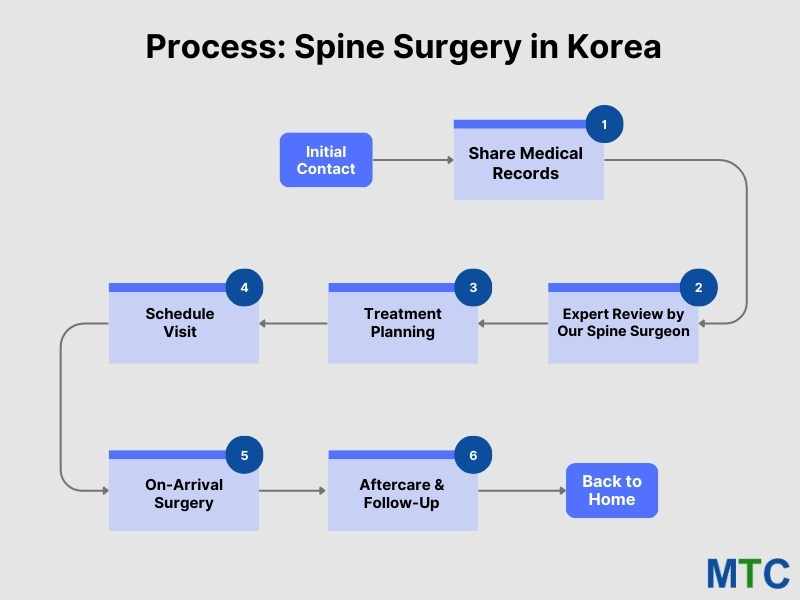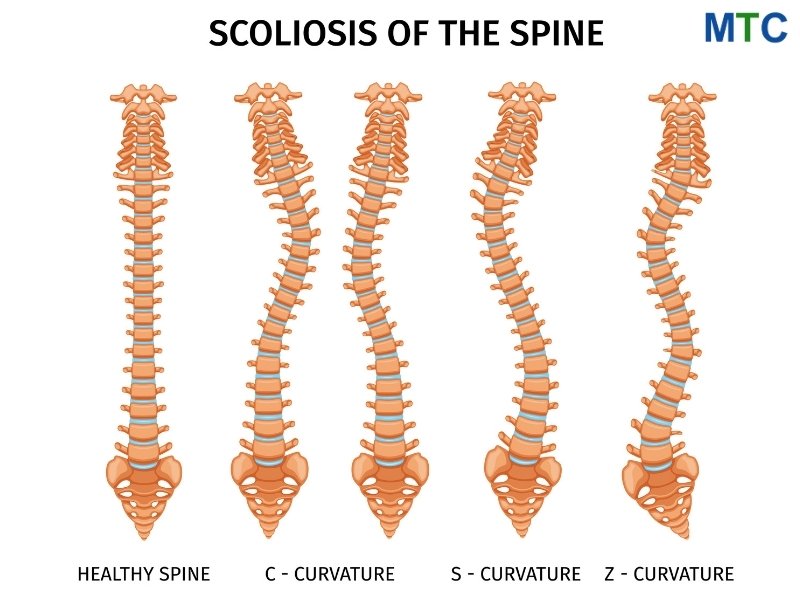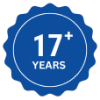Scoliosis Correction Surgery in Seoul (Incheon), Korea: A Complete Guide
Dealing with persistent back pain? Find relief with safe, affordable scoliosis correction surgery in Seoul (Incheon), Korea.
Read more to discover top hospitals & surgeons.

Our Partner Spine Surgeon Performing Surgery
What Is the Cost of Scoliosis Correction Surgery in Seoul (Incheon), Korea?
The cost of scoliosis correction surgery in Seoul (Incheon), Korea, is way lower than in the West, particularly the US. However, each case is different.
To know how much it would cost in your case, fill out our medical questionnaire. Our case managers will get back to you with the details.
See below for a clear overview of what's included and excluded in the cost.
Included:
- Hospital, Medical & Surgery fees
- Bilingual translator fees
- Hospital food as per treatment plan
Excluded:
- Accommodation
- Ground transfers
- Food outside the treatment plan
Step-by-Step Process: Scoliosis Surgery in Korea
At MTC, we offer comprehensive support throughout your journey. Here's a detailed breakdown of the process:
1. Initial Assessment
2. Expert Review & Treatment Planning
3. On Arrival Consultation and Surgery
4. Aftercare and Follow-Up
Initial Assessment
- Our case managers will collect initial reports from you.
- The initial reports will include an X-ray, CT Scan, & MRI.
- You can share your reports through the following platforms:
- WeTransfer
- Drive Upload
- Dropbox
- PDF in mail
Note: The reports have to be recent (within 3 months) in order for them to be valid.
If the reports are outdated, the hospital will re-evaluate your case when you reach Korea.
Expert Review & Treatment Planning
- Our expert surgeon in Seoul - Dr. Shin Jae Kim, will examine your case.
- Based on the evaluation, the doctor will share a tentative treatment plan.
Note: Online consultations are also available with the doctor on request.
On Arrival Consultation and Surgery
- Day 1 will be pre-op (consultation and treatment planning)
- The surgery is typically scheduled for the second day.
- The total treatment duration can vary based on your specific condition.
The table below highlights a general timeline for scoliosis correction surgery in Korea.
| Timeline | Estimated Duration |
| Treatment Time | 4-6 hours |
| Hospitalization Time | 2 weeks |
Aftercare and Follow-Up
- Upon discharge, you'll be given discharge instructions for post-surgery.
- These instructions will include - how to look after the wound, mobilization, driving, wearing braces, and more.
- The hospital will check in with you after your surgery to see how you're doing.
Note: If you have any concerns, the surgeon will provide necessary guidance or follow-up care.

Process for Spine Surgery in Korea
Related Resources: Scoliosis Surgery in Korea
Complete Procedure Guide: Scoliosis Correction Surgery
Scoliosis is an abnormal sideways curvature of the spine. This often resembles a "C" or "S" shape. While everyone's spine has natural curves, scoliosis involves excessive bending.
The goal of surgery is to improve spinal alignment, relieve pain, and improve quality of life.

Scoliosis of the Spine
How Is Scoliosis Treated in Seoul, Korea?
Spinal fusion is the most common surgery used to treat scoliosis. The treatment process starts with a thorough examination of the curvature.
Surgery usually involves the following steps:
- Incision and Exposure: The surgeon makes an incision along your back, providing access to the spine.
- Bone Grafting: A bone graft (natural or synthetic) is placed between the affected vertebrae to promote fusion.
- Rod Placement: Metal rods are carefully positioned along the spine to provide support and straighten the curve.
- Screw Fixation: Screws secure the rods to the vertebrae, ensuring stability and alignment.
- Closure: The incision is closed with sutures or staples, and the healing process begins.
Note: The average hospitalization duration for spine fusion surgery in Seoul, Korea, is 7 days.
Types of Scoliosis Surgery
The 3 most common types of scoliosis are:[1]
- Idiopathic Scoliosis: The most common type, with unknown cause. It's categorized by age:
- Infantile (under 3 years)
- Juvenile (4-10 years)
- Adolescent (11-18 years)
- Congenital Scoliosis: Present at birth due to improper spine or rib development.
- Neuromuscular Scoliosis: Caused by nervous system issues affecting muscles, like cerebral palsy or muscular dystrophy.
Possible Causes of Scoliosis:
- Unknown cause (idiopathic)
- Cerebral palsy (affecting movement, learning, hearing)
- Muscular dystrophy (causing muscle muscles)
- Birth defects affecting the spine
- Spinal injuries or infections
- Family history of scoliosis
What Are the Common Symptoms of Scoliosis?
Common symptoms of scoliosis involve:
- Shoulder pain
- Visible spinal curve
- Head slightly off-centre
- Uneven hips or shoulders
- Breathing or sitting difficulties
Right Candidate for Scoliosis Surgery
People who may need scoliosis surgery include:
- Those with a curvature.
- Patients with pain or difficulties in daily activities.
- Individuals whose back curvature is getting worse over time.
When determining a person's suitability for the procedure, factors like compatibility, overall health, age, and potential risks are taken into account.
When Do You Need Scoliosis Surgery?
The path to managing scoliosis varies based on individual needs. You may or may not need scoliosis treatment based on below conditions:
- Mild curve (10-25 degrees): Routine checkups every few months to track any changes.
- Moderate curve (25-40 degrees): Wearing a brace to help prevent the curve from getting worse.
- Severe curve (over 40 degrees) and still growing: Surgery may be recommended to correct the curve and promote a healthy spine.
For most individuals with idiopathic scoliosis, surgery isn't necessary. You might need bracing in case of a moderate curve.
The appropriate treatment approach depends on various factors, including:
- The severity of the curve
- The underlying cause of your scoliosis
- Whether you are still experiencing growth
- The location of the curve within your spine
Benefits & Risks Associated With Scoliosis Surgery
Choosing treatment options for scoliosis in Seoul, Korea, can offer benefits such as:
- Improved spinal alignment
- Enhanced body stability
- Better respiratory function
- Pain relief & overall well-being
Although scoliosis surgery in Seoul is performed by experts, there are potential risks:
- Low back pain
- Leakage of spinal fluid
- Spinal infection after surgery
- Breathing problems (in severe scoliosis)
- Persistent pain if there is wear and tear of the spine bones
- Spine or nerve damage from an uncorrected curve or spinal surgery
Recovery & Aftercare: Scoliosis Correction Surgery
Walking is encouraged soon after surgery, but avoid strenuous activity for 6 months. Physical therapy and pain medication may be part of your recovery.
The fused area will be stiff but shouldn't hinder normal movements.
Avoid:
- Heavy lifting
- High-impact activities (jogging, sports)
- Twisting and bending
- Smoking and excessive alcohol
Contact your doctor immediately if you experience worsening back pain or signs of infection.

Did you know?
Approximately 268,372 patients were diagnosed with scoliosis in Korea (2011-2015).[2] And, 0.7% of these patients underwent surgery within 5 years.[3]
Continue reading to discover the top Korean hospitals for scoliosis!
Best Hospital for Scoliosis Surgery in Korea

With 42+ years of experience, Wooridul Spine Hospital is Korea's first spine-specialized hospital. It has successfully treated 5.5 lakh+ spine cases.
They offer minimally invasive and casual treatment with advanced technology. This includes an EOS imaging system and minimally invasive treatments.
The clinic's International Patient Center (WIPC) provides specialized facilities. It also gives multilingual support in English, Japanese, Chinese, French, and more.
Being JCI-certified, it ensures accessible treatment across its established 11 network hospitals.
- Korean MoHW Accredited
- JCI Certified
- 95% Success Rate
- World's Best Smart Hospitals 2023 by Newsweek
- Healthcare Accreditation by the Korean Ministry of Health and Welfare
- Accreditation of Spine Specialty Hospital by the Korean Ministry of Health and Welfare

- 55+ Years of Experience
- JCI Accredited
- MOHW Accredited
- Achievement of 500 Kidney Transplants
- Achieved 1,000 cases of high-difficulty robotic surgery
- Obtained certification as a reperfusion therapy stroke center
Best Surgeon for Scoliosis Surgery in Korea

Dr. Shin-Jae Kim
Dr. Shin Jae Kim is currently the Director of Cheongdam Wooridul Spine Hospital.
Dr. Kim is the director of its Research and Development Center. He is also a Board Member of the Institutional Review Committee.
Chief of Neurosurgery at the Daejeon Northern Military Manpower Administration.
Education
Chung-Ang University College of Medicine
Memberships
- AO Spine Foundation (World's Leading Spine Society)
- North American Spine Society
- The Korean Minimally Invasive Spine Surgery Society (KOMISS)

Dr. Sang-Ho Lee
Dr. Sang-Ho Lee is the Founder and Chairman of Wooridul Spine Hospitals.
He's been a Fellow of ABMISS. He's also been a Clinical Fellow at UFR Biomedical Anatomy Laboratory at Paris V.
Earned the Parviz Kambin Award and The Royal Society for Surgery Lifetime Achievement Award.
Major Career Roles
- Founder and president of the WCMISST
- President of the IITS and ISMISS
Education
Busan National University College of Medicine
Memberships
- American Association of Neurological Surgeons (AANS)
- North American Spine Society (NASS)

Dr. Deuk-Soo Jun
Dr. Deuk-Soo Jun is the Director of the Spine Center at Gachon University Gil Medical Center.
With trainings at Cedars Sinai and Stryker Fellow in the USA, he has held major roles.
Career Experience
- Department of Orthopedics, Seoul National University Hospital, Fellow
- Hallym University Kangnam Sacred Heart Hospital, Full Time Lecturer
- Gachon University Gil Medical Center, Director of Spine Center
Education
Seoul National University College of Medicine, M.D.
Why MTC for Scoliosis Correction Surgery in Seoul, Korea?
Choosing MTC for scoliosis surgery in Korea will make your journey hassle-free. Here’s what you’ll benefit from:
- World-Class Clinic: JCI-accredited leader in endoscopic spine surgery.
- Proven Success: 500,000+ successful surgeries and personalized treatment plans.
- Technology & Experience: Precision imaging, minimally invasive procedures, 26,000+ international patients treated.
- Language Assistance: The doctors here speak English, Russian, Mongolian and Chinese.
- Leading Spine Surgeons: Award-winning experts with up to 40 years of experience.
Watch our leading spine surgeon - Dr. Shin Jae Kim, talk about his experience in spine surgery.
Best Spine Surgeon in Seoul, South Korea
How Does MTC Select and Partner With Hospitals?
At MTC, here’s what we look at while choosing our partners:
- Clinic’s International & national accreditations or awards
- Doctor’s qualifications & credentials
- Patient experience from around the world
- Best negotiated or discount prices they offer
With our extensive research, we try our best to make your medical care safe, fulfilling, and affordable.
Is Scoliosis Correction Surgery in Seoul (Incheon), Korea Safe?
Yes, scoliosis correction surgery in Seoul, Korea, is safe. Our partner clinic in Seoul employs a special MRI machine for international patients - MRI 3.0 Tesla (Siemens).
It is more accurate and provides higher-resolution images compared to regular MRI machines. It has a large bore that can help reduce anxiety, particularly in patients with claustrophobia.
Moreover, doctors here are active members of ‘The Korean Society for the Advancement of Spine Surgery.’ Thus, ensuring you receive the best healthcare possible.
Conclusion
Scoliosis correction surgery in Seoul (Incheon), Korea, offers renewed mobility at affordable prices. Contact MTC to connect with leading spine doctors in Seoul’s best hospital.
FAQs
What Is the Average Hospitalization Time for Scoliosis Surgery in Korea?
The average hospital stay for scoliosis treatment in Korea is 2 weeks. This duration covers the time required for pre-surgery, surgery, and post-surgery recovery.
References
- Medline Plus: Scoliosis
- NCBI: Incidence and Surgery Rate of Idiopathic Scoliosis…




